Doppelapplikationsstickerei ist eine kreative Technik, die Ihren Designs einen dynamischen und vielschichtigen Look verleiht. Durch die Verwendung von zwei Stofflagen, Sie können kräftige Kontraste und Texturen einführen, die Ihren Projekten Leben einhauchen.
Diese Methode steigert nicht nur die optische Attraktivität Ihrer Arbeit, sondern bietet auch unzählige Möglichkeiten zur individuellen Gestaltung.
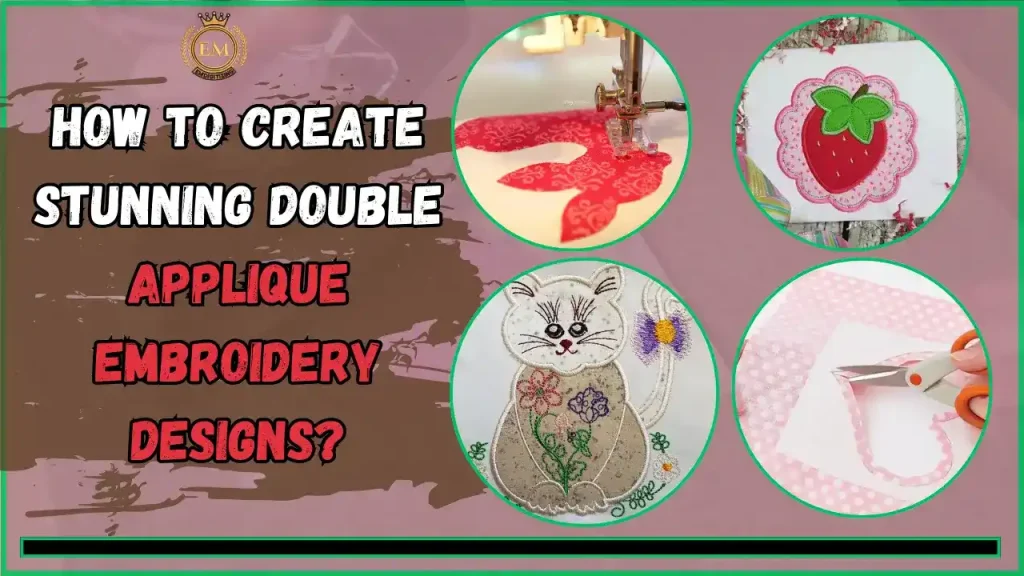
In diesem Artikel, Wir werden untersuchen, wie Sie ganz einfach atemberaubende Doppelstickapplikationen erstellen können, Geben Sie Ihren Projekten jedes Mal ein professionelles und auffälliges Finish.
So erstellen Sie atemberaubende Doppelapplikations-Stickdesigns?
Was ist Doppelapplikationsstickerei??
Applikationen Stickerei-Design ist eine unterhaltsame und kreative Möglichkeit, Ihren Designs Ebenen hinzuzufügen. Dabei werden zwei Stoffstücke auf den Grundstoff gelegt und zusammengenäht, um ein dekoratives Design zu schaffen.
Das Ergebnis ist ein farbenfrohes, strukturiertes Muster, das auffällt. Doppelapplikationen verleihen Ihren Projekten Tiefe und lassen sie professionell und einzigartig aussehen.
Grundlegende Materialien zum Erstellen von Stickereien mit Applikationen
Mit den richtigen Materialien stellen Sie sicher, dass Ihre Doppelapplikations-Stickmotive perfekt zur Geltung kommen. Nachfolgend finden Sie eine Liste der wesentlichen Materialien, die Sie benötigen:
- Applikationsstoff
- Grundstoff
- Stabilisator
- Schmelzbares Netz
- Stickgarn
- Mini-Eisen
- Applique Schere
Lassen Sie uns die einzelnen Materialien und Werkzeuge im Detail untersuchen, um ihre Bedeutung zu verstehen und zu verstehen, wie sie zur Herstellung wunderschöner Applikationen und Stickereien beitragen:
1. Applikationsstoff
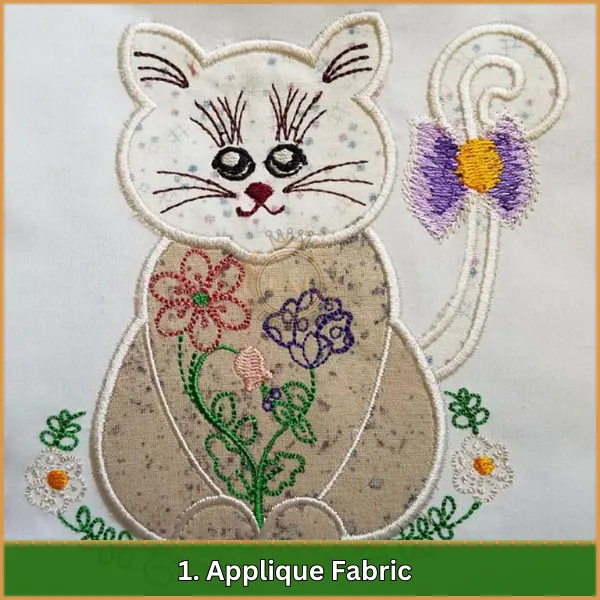
So erstellen Sie das Schichtdesign, Sie benötigen zwei Arten von Applikationsstoffen.
Wählen Sie Stoffe, die sich in Farbe oder Textur von Ihrem Grundstoff abheben, wie Satin, Seide, oder Baumwolle, um die Schichten hervorzuheben.
2. Grundstoff
Dieser Stoff bildet die Grundlage für Ihr Applikationsdesign. Es sollte stabil genug sein, um die zusätzlichen Schichten zu tragen. Stoffe wie Baumwolle oder Leinen eignen sich hierfür ideal, da sie beim Nähen ihre Form gut behalten.
3. Stabilisator

Stabilisatoren unterstützen Ihren Stoff beim Nähen, Verhinderung von Bündelung oder Verformung.
Bei Applikationsprojekten werden häufig abreißbare oder abschneidbare Stabilisatoren verwendet, um alles glatt und sicher zu halten.
4. Schmelzbares Netz
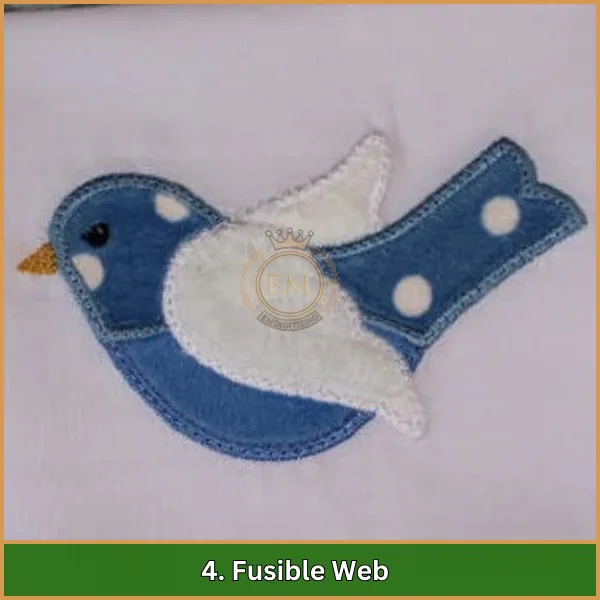
Das schmelzbare Vlies fungiert als Klebstoff, Halten Sie Ihre Applikationsteile vor dem Nähen vorübergehend fest.
Es ist ein Muss, um eine präzise Platzierung zu gewährleisten und das Verrutschen des Stoffes während des Nähvorgangs zu reduzieren.
5. Stickgarn
Verwenden Sie hochwertige Produkte Stickgarne wie Polyester oder Viskose sowohl für das Anheften als auch für die Ziernähte. Diese Fäden sehen nicht nur glänzend aus, sondern sind auch stark genug, um den Stoff sicher an Ort und Stelle zu halten.
6. Mini-Eisen
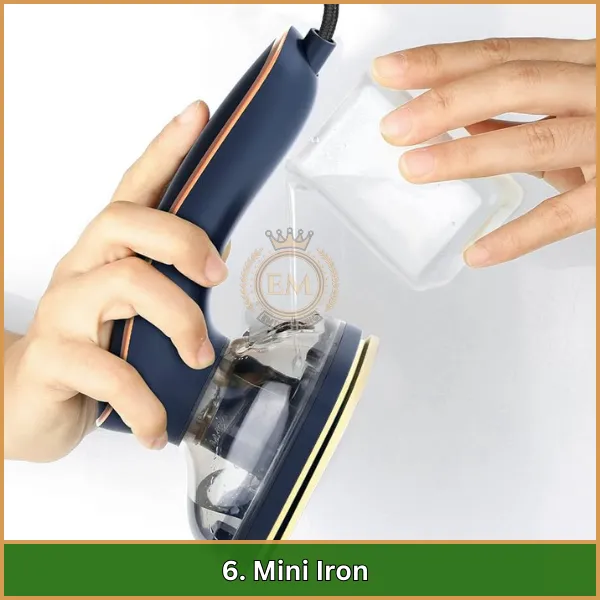
Zum Anbringen kleiner Applikationsteile ist ein Mini-Bügeleisen unerlässlich.
Dank seiner kompakten Größe können Sie die Fixierbahn präzise andrücken, ohne die umliegenden Stoffbereiche zu beschädigen.
7. Applique Schere
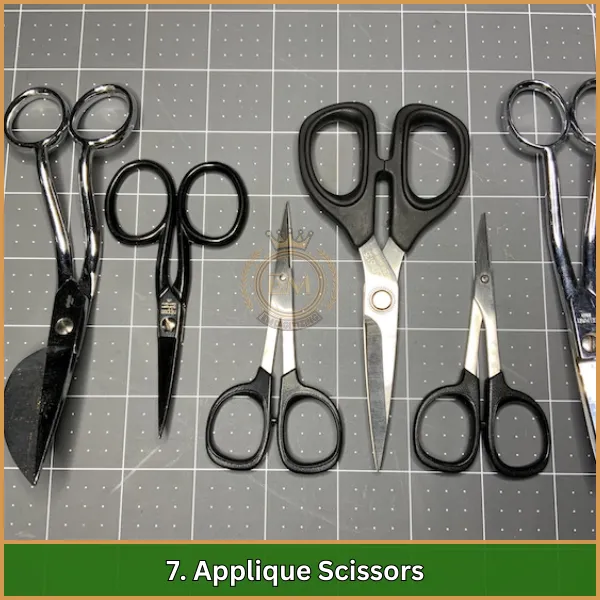
Bei der Applikationsarbeit kommt es auf Präzision an, Und mit einer scharfen Applikationsschere können Sie überschüssigen Stoff rund um die Heftstiche sauber abschneiden.
Die Investition in hochwertige Scheren sorgt für Sauberkeit, professionell aussehende Kanten.
So führen Sie eine Doppelapplikationsstickerei durch
Befolgen Sie diese Schritte, um ein wunderschönes Doppelapplikationsdesign zu erstellen:
1. Entwerfen Sie Ihr Applikationsmuster
Beginnen Sie mit der Erstellung oder Auswahl eines Doppelapplikationsmusters mit Sticksoftware. Stellen Sie sicher, dass das Design Schichten für den Doppelapplikationseffekt enthält. Speichern Sie es in einem maschinenlesbaren Format wie .PES oder .DST.
Wenn das Entwerfen schwierig erscheint oder Sie keine teure Software haben, EMdigitalisierung kann helfen. Wir bieten hochwertige Qualität, erschwinglich Digitalisierung von Dienstleistungen die Ihnen Zeit und Mühe sparen.
2. Spannen Sie Ihren Grundstoff ein
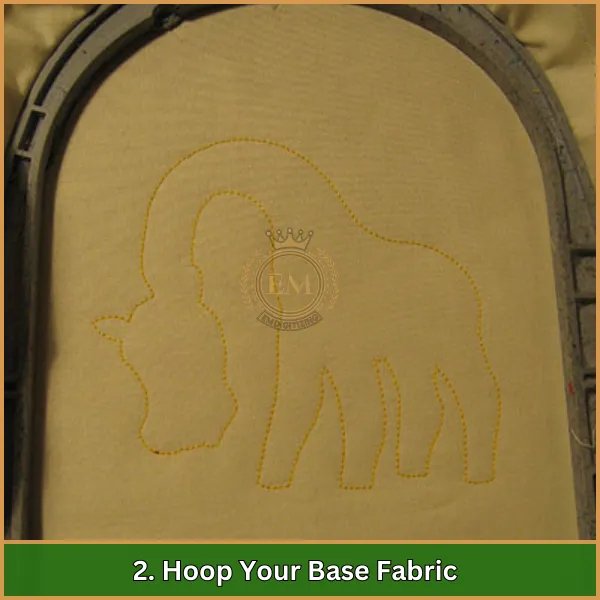
Legen Sie Ihren Grundstoff in die Stickrahmen.
Stellen Sie sicher, dass der Stoff straff und glatt ist, um Falten oder Kräuselungen beim Nähen zu vermeiden.
3. Fügen Sie Stabilisator hinzu, um den Stoff zu stützen
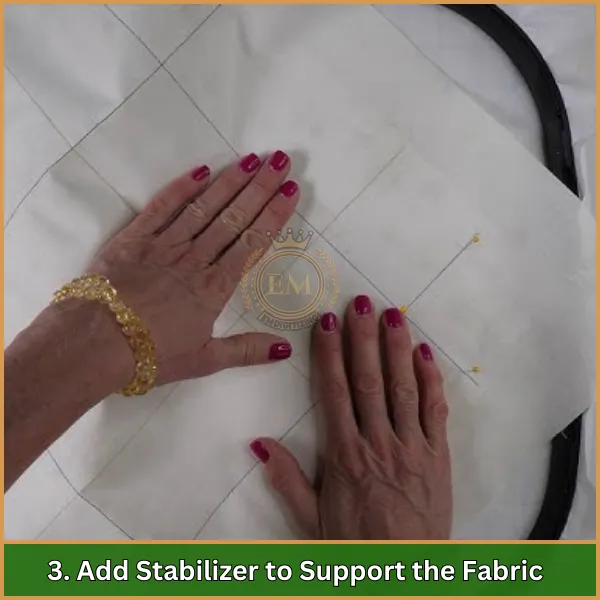
Schieben Sie einen Stabilisator, wie Tear-Away oder Cut-Away, unter dem eingespannten Stoff, damit er beim Nähen fest bleibt.
Dadurch wird ein Verrutschen und Faltenbildung beim Sticken verhindert.
4. Nähen Sie die Platzierungskontur zusammen
Laden Sie das Design in Ihr Stickmaschine und nähen Sie die Platzierungskontur. Dieser Stich zeigt, wo Sie Ihren Applikationsstoff positionieren müssen.
5. Schneiden Sie den Applikationsstoff aus
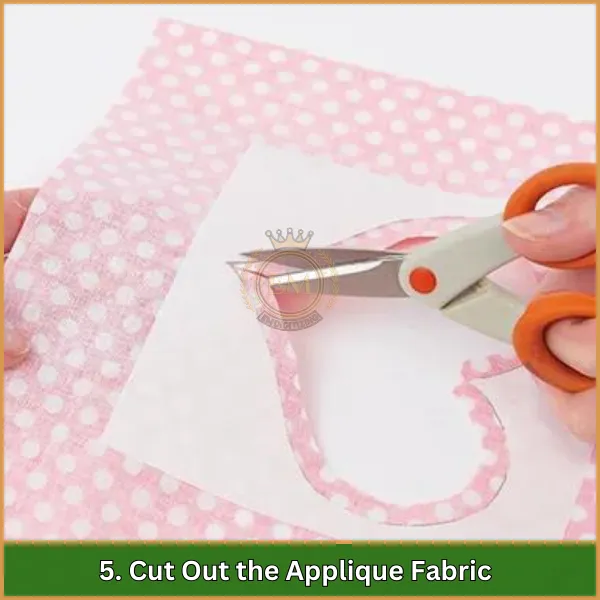
Schneiden Sie Ihre Applikationsstoffstücke etwas größer als die Platzierungskontur zu.
Dadurch kann der Stoff den Nähbereich vollständig abdecken.
6. Befestigen Sie das schmelzbare Netz am Applikationsstoff
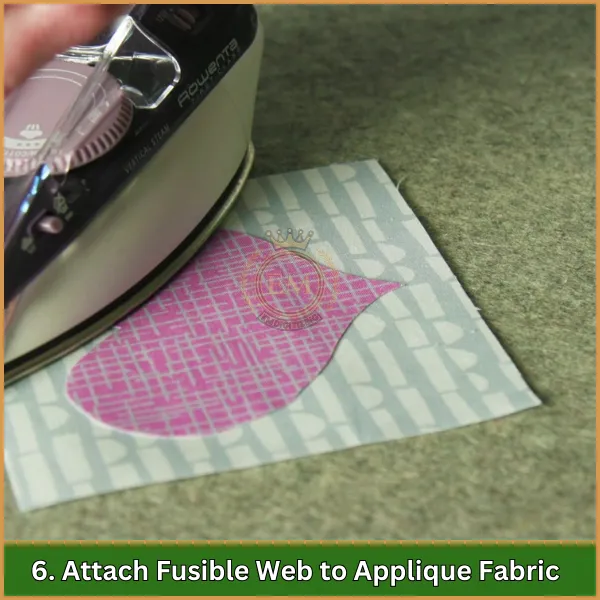
Schneiden Sie das Bügelvlies entsprechend der Größe jedes Applikationsstoffstücks zu und bügeln Sie es auf die Rückseite des Stoffes.
Dies dient als Klebstoff, um den Stoff an Ort und Stelle zu halten. Sobald es abgekühlt ist, Ziehen Sie das Trägerpapier ab.
7. Positionieren und drücken Sie die erste Applikationsebene
Legen Sie den ersten Applikationsstoff vorsichtig über die Platzierungslinie, Stellen Sie sicher, dass es den Umriss abdeckt. Drücken Sie mit einem Mini-Bügeleisen darauf, um die schmelzbare Bahn zu aktivieren und den Stoff an Ort und Stelle zu halten.
8. Nähen Sie den Heftstich
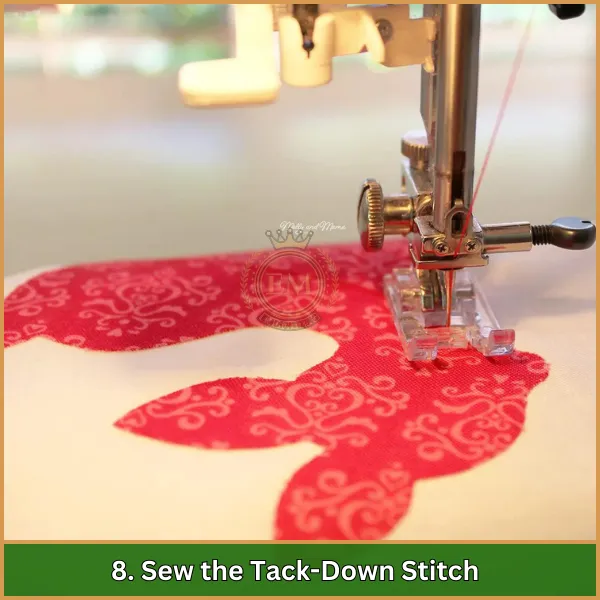
Setzen Sie den Stickrahmen wieder in die Stickmaschine ein und nähen Sie den Heftstich, um den Applikationsstoff auf dem Grundstoff zu befestigen.
9. Schneiden Sie überschüssigen Applikationsstoff ab
Nehmen Sie den Stickrahmen aus der Maschine und schneiden Sie mit einer scharfen Applikationsschere überschüssigen Stoff rund um den Heftstich ab. Seien Sie vorsichtig, um ein Einschneiden in die Stiche zu vermeiden.
10. Fügen Sie die zweite Applikationsebene hinzu
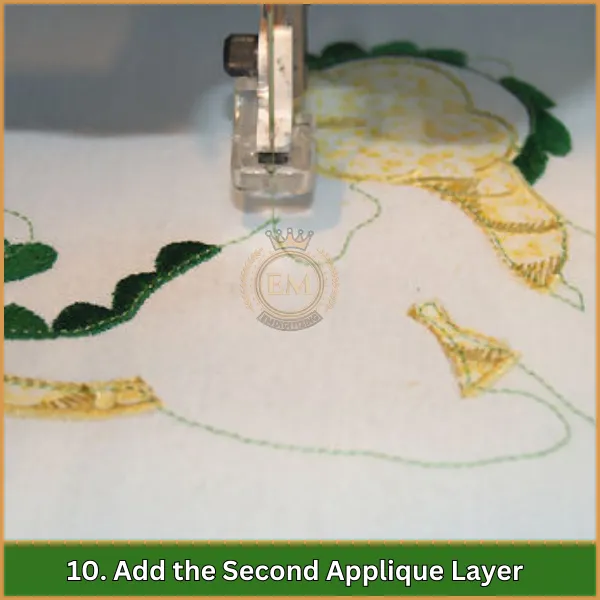
Für die zweite Schicht, Schritte wiederholen 5 durch 9, Legen Sie den zweiten Applikationsstoff über den ersten, um einen Lageneffekt zu erzielen.
11. Mit Satin- oder Zickzackstichen abschließen
Setzen Sie den Rahmen wieder in die Maschine ein und versäubern Sie die Kanten des Applikationsstoffs mit einem Satin- oder Zickzackstich. Dies ergibt eine saubere, Polierter Look für Ihr Design.
12. Entfernen Sie den Stabilisator und reinigen Sie das Design
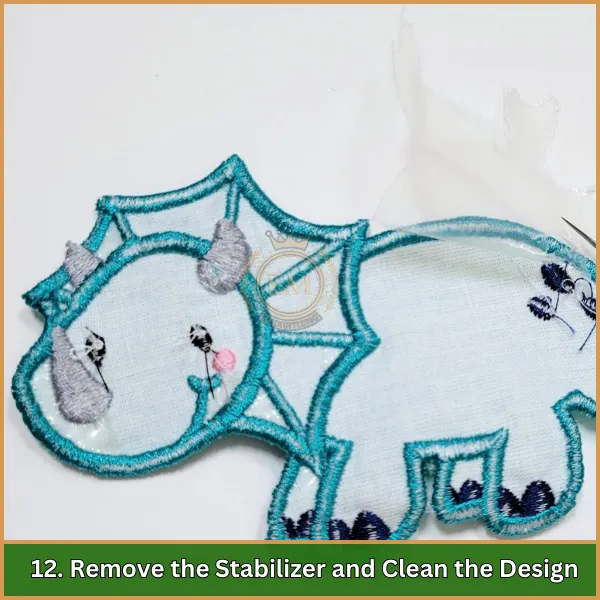
Sobald das Nähen abgeschlossen ist, Reißen oder schneiden Sie den überschüssigen Stabilisator vorsichtig von der Rückseite des Motivs ab.
Entfernen Sie alle losen Fäden, um Ihr Design sauber zu halten.
13. Überprüfen Sie und nehmen Sie letzte Anpassungen vor
Untersuchen Sie Ihr fertiges Design auf etwaige Fehler oder lose Stiche. Schneiden Sie alle verbleibenden Fäden ab oder nehmen Sie kleine Anpassungen vor, um sicherzustellen, dass alles perfekt aussieht.
Hilfreiche Tipps für die Doppelapplikationsstickerei
Hier sind einige hilfreiche Tipps für Doppelapplikationen, die Ihren Prozess und Ihre Ergebnisse verbessern können:
- Verwenden Sie hochwertige Materialien: Wählen Sie dicht gewebt, hochwertige Stoffe sowohl für die Basis als auch für die Applikation sorgen für ein sauberes Finish.
- Stabilisierung ist der Schlüssel: Verwenden Sie immer den passenden Stabilisator, wie mittelschweres Cutaway, um den Stoff beim Nähen zu stützen.
- Fusible Webanwendung: Tragen Sie ein schmelzbares Gewebe auf (z.B., Heat N Bond Lite) auf die Rückseite des Applikationsstoffs auftragen, um Falten zu vermeiden und ein glattes Finish zu gewährleisten.
- Präzises Schneiden: Benutzen Sie eine scharfe Applikationsschere, um überschüssigen Stoff in der Nähe des Heftstichs abzuschneiden, Vermeiden Sie rohe Kanten.
- Bedeutung des Platzierungsstichs: Befolgen Sie den Platzierungsstich sorgfältig als Orientierungshilfe für die Positionierung Ihres Applikationsstoffs.
- Halten Sie den Stoff fest: Halten Sie den Applikationsstoff während des Heftstichs ruhig, um eine Fehlausrichtung zu vermeiden.
- Schichtungstechniken: Für Doppelapplikationen, Nähen Sie überlappende Teile deutlich mit kontrastierenden Farben oder Texturen, um eine visuelle Wirkung zu erzielen.
- Verwendung von Dielines: Wenn Stanzlinien enthalten sind, Verwenden Sie sie, um Applikationsstoffe präzise zuzuschneiden, Verbesserung der Ausrichtung und Zeitersparnis.
Fazit
Doppelte Applikationsstickereien fügen Schichten hinzu, Textur, und Schönheit für Ihre Projekte. Mit den richtigen Schritten und Materialien, Sie können ganz einfach einzigartige und atemberaubende Designs erstellen. Whether you’;Ich arbeite gerade an Kleidung, Heimdekoration, oder Geschenke, Diese Technik bietet endlose Möglichkeiten für Kreativität.
Für die besten Ergebnisse in Ihrem Stickprojekte, EMdigitizing ist hier, um Sie zu unterstützen. Wir bieten Stickerei-Digitalisierungs- und Vektorkunstdienste mit kurzen Bearbeitungszeiten. Plus, Wir bieten eine an 50% Rabatt für Erstkunden und kostenlose Angebote in nur wenigen Minuten 5 Protokoll!
Nutzen Sie dieses tolle Angebot und verschönern Sie Ihre Stickerei noch heute mit EMdigitalisieren. Wenn Sie irgendwelche Fragen haben, Fragen Sie einfach nach.
Vielen Dank fürs Lesen!
Häufig gestellte Fragen
Applikationen herstellen Stickmotive, Wählen Sie zunächst ein Design und einen Stoff aus, Schneiden Sie dann die Motivform aus dem Stoff aus, Legen Sie es auf den Grundstoff, und befestigen Sie die Kanten mit einer Nähmaschine oder per Handstich.
Um rückwärts zu sticken, Legen Sie zwei Stoffe übereinander, Nähen Sie ein Muster durch beide, Schneiden Sie dann Teile der oberen Schicht ab, um die untere Schicht freizulegen, ein kontrastierendes Design schaffen.
Um eine einfache Applikation anzufertigen, Wählen Sie eine einfache Form (wie ein Herz), Schneiden Sie es aus Stoff, Dann nähen Sie es mit einer geraden Nähmaschine auf Ihren Grundstoff, Zickzack, oder Deckenstich für die Kanten.
Die beste Applikationsmethode hängt vom Projekt ab; Die maschinelle Applikation ist bei großen Gegenständen schnell und langlebig, während die Handapplikation Präzision und Flexibilität für detaillierte Arbeiten bietet.
